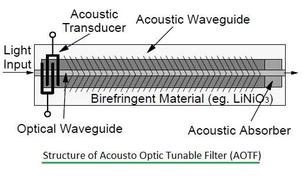Optical Filter Basics: Types and Specifications
Advertisement
An optical filter is essentially a two-port device. Its primary function is to allow signals of a specific wavelength to pass through while blocking or rejecting all other wavelengths, according to its design. Some filters are equipped with a third port, which allows the filtered signals to be extracted. This configuration is illustrated in Figure 1.

Optical filters find widespread application in Wavelength Division Multiplexing (WDM) for both multiplexing and de-multiplexing operations. They are also crucial components in optical amplifiers, where they serve to equalize the gain response and to filter out unwanted noise.
Optical Filter Types
Optical filters can be categorized into three main types based on the wavelengths they permit to pass through:
- Long Pass: Transmits wavelengths above a specific cutoff wavelength.
- Short Pass: Transmits wavelengths below a specific cutoff wavelength.
- Band Pass: Transmits wavelengths within a narrow range or band.
Besides these, other types of optical filters exist, including Dichroic, Dielectric, reflective, and absorptive filters.
Optical Filter Specifications
The following table summarizes the performance characteristics achieved using different filtering technologies:
| Property of the filter | Fiber Bragg Grating | AWG (arrayed waveguide grating) | TFMF(thin-film resonant multicavity filter) |
|---|---|---|---|
| 1dB bandwidth(nm) | 0.3 | 0.22 | 0.4 |
| Isolation (dB) | 25 | 25 | 25 |
| Loss(dB) | 0.2 | 5.5 | 7 |
| PDL (dB) | 0 | 0.5 | 0.2 |
| Temperature coeff. (nm/degreeC) | 0.01 | 0.01 | 0.0005 |
Advertisement
 RF
RF



